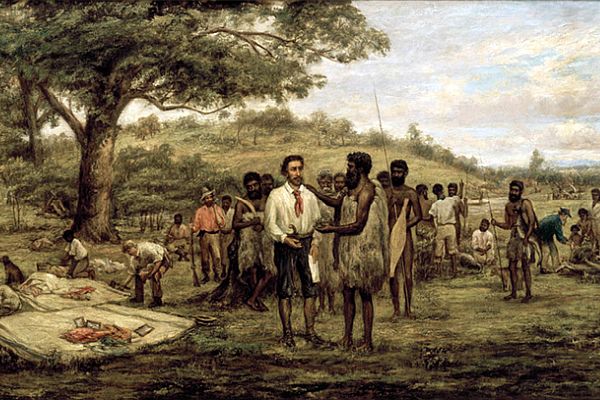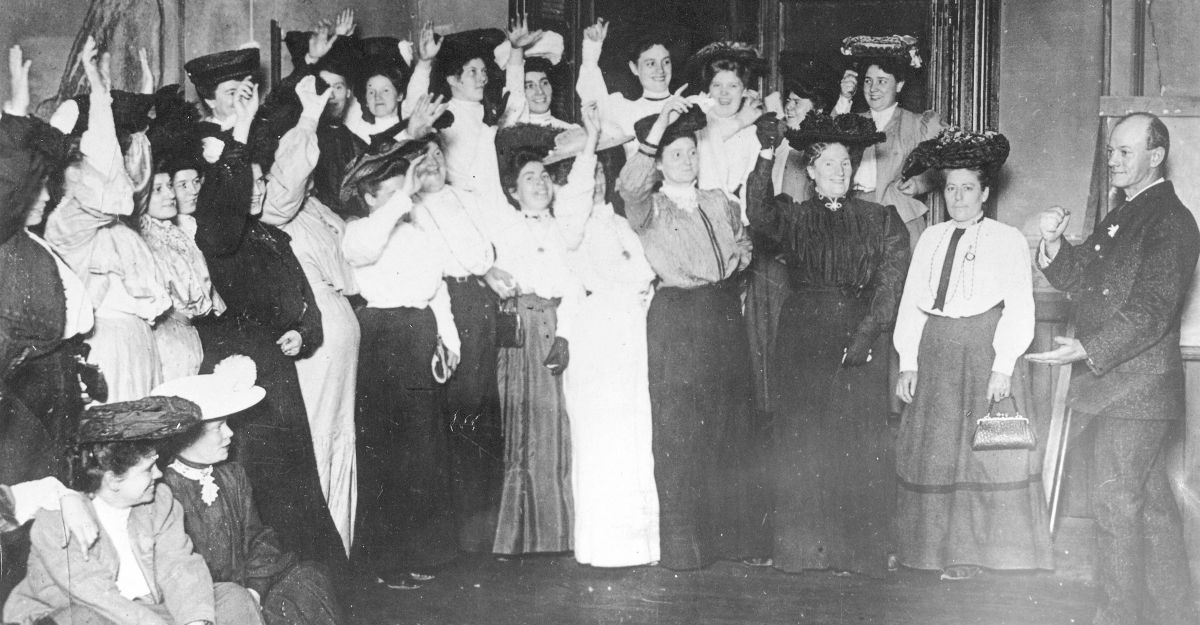The sole week dedicated to Indigenous Australian themes in my first semester at university, in 2016, covered John Batman’s famous 1835 treaty with the Kulin people of the Melbourne area. We were taught precisely what we all already believed: that Batman and his party had misled the Aboriginal people they negotiated with. That they couldn’t have possibly understood the terms of the agreement, as it was written in English and there was an obvious language barrier. Clearly, therefore, that they were manipulated into putting some marks on a piece of paper, promised some meaningless trinkets, and scammed out of their priceless land.
If you’re an Australian familiar with this famous event, this is probably what you believe, too. That’s about what’s expected; it’s a narrative that’s pervasive and rarely questioned. At the Bunjilaka exhibit in the Melbourne Museum, for example, a plaque quotes a Wurundjeri teenager who laments that there’s no way her people could have understood what they were agreeing to.
I’d accepted this without question myself until last year, when I had the privilege of taking the Aboriginal Australian History subject at La Trobe University. It was run by Leonie Stevens, an academic best known for her 2017 book, Me Write Myself: The Free Aboriginal Inhabitants of Van Diemen’s Land at Wybalenna, which tells the story of the Wybalenna settlement, founded on Flinder’s Island by Tasmanian Aboriginal people forced into exile in the 1820s. For over a century, most historians had lazily assumed that the people at Wybalenna were miserable and helpless, only mentioning them in passing. Imagine Stevens’ surprise when she found that there existed sufficient written records from its inhabitants to fill a book almost entirely with their own words, showing that they’d actually built and maintained a vibrant community while very much advocating for themselves with the colonial authorities.
This is a recurring theme in the twentieth-century study of postcolonial Australian Indigenous history, which relegates Indigenous people to the role of passive victims, mere footnotes in settler stories. This is often somewhat well-meaning – these ideas generally don’t come with denialism of colonial atrocities and still acknowledge that Indigenous people were systemic victims – but is nonetheless heavily reductionist: acknowledging Indigenous agency is hardly incompatible with the idea that Indigenous people have been wronged by colonialism.
The popularly accepted interpretation of the events surrounding Batman’s Treaty is possibly the most flagrant example of this. We take for granted that John Batman and his associates mislead people who were supposedly incapable of understanding what was really going on, never stopping to ask the most basic questions about the Kulin’s side of the story.
It was during Stevens’ course that I was first exposed to authors who actually have asked such questions. We read Robert Kenny’s journal article, Tricks or Treats?: A Case for Kulin Knowing in Batman’s Treaty, which looks at the Treaty from the Kulin perspective. Kenny makes a compelling argument that the Kulin people knew a lot more than we give them credit for. He points out that the goods offered to them in the Treaty – often discounted as mere trinkets in the prevailing accounts –would have actually been quite valuable. The metal tools were clear technological upgrades for their important everyday tasks, for example, and the Treaty came with a much larger yearly rent of similar goods.
Kenny also notes that the Kulin people would have known full-well the devastation that had been brought upon Indigenous people by large-scale colonisation in New South Wales, as they had trade routes that stretched there, along which news surely would have travelled by word of mouth in the almost fifty years since the initial colonial landings. They hoped therefore that by allowing just Batman and his company to live among them, they could avoid the fate of those to the north. To this end, they performed a tanderrum – a ceremony that grants outsiders the temporarily right to live on their land, rather than the cession of land rights. The Treaty itself is compatible with this interpretation, since it included the caveat that it would be voided if the yearly delivery of goods ceased – clearly implying tenancy rather than a transfer of ownership.
Batman’s party additionally included seven Aboriginal translators from Sydney who would have been familiar with such ceremonies. It would be ludicrous to assume that there wasn’t at least some level of intelligibility between them, as some of these translators were from areas just a few hundred kilometres from Port Philip. The Kulin people clearly had a fair idea of what they were agreeing to.
Indeed – in spite of how quickly they reneged on the Treaty – the colonial authorities understood that the Kulin expected it to be honoured, even helping Batman’s company to supply the agreed-upon goods. A couple of years later, once the provision of goods stopped and Aboriginal people began being denied access to the growing colonial settlement, the Kulin clearly expressed their discontent with the terms being broken. Leaders such as Billibellary protested, and there’s evidence that Joseph Gillibrand, who had penned the Treaty, was killed in retaliation, strongly suggesting that the Kulin believed him to be its arbiter.
In an excerpt from 1835: the founding of Melbourne & the conquest of Australia, James Boyce takes on Batman’s case, examining the question of whether or not he was in fact duplicitous in his dealings with the Kulin. He shows that even Batman – who was a heinous mass murderer during his time in Tasmania and something of a self-serving opportunist –legitimately believed up until his dying breath that both sides had understood the Treaty, never giving any indication that he had intended to mislead them, not even in his private correspondence.
When we discussed these works in class, the general sentiment was ‘what we’ve read here completely contradicts everything else we’ve ever been told, including in other classes here at La Trobe.’ It was like we had been given the opportunity to apply our critical thinking faculties and common sense to the Treaty for the very first time. Of course people with a very mobile culture who lived only about 700 kms from Botany Bay would have heard about the goings-on in New South Wales sometime during the preceding forty-seven years. Yet somehow, none of us had ever thought to question our understanding before. We had denied the Kulin even the most basic agency, readily accepting them as passive victims. Why, then, is this myth so enduring?
Apart from obvious way that the myth’s denial of agency fits with patronising attitudes towards Indigenous people, the fact is that for many Australians, acknowledgement of colonial genocide comes with the tacit need to disconnect ourselves from it. In pinning the blame on John Batman, we performatively acknowledge a supposed colonial crime while stopping the discussion before getting to the next point: the reason that the Treaty was rendered invalid by the colonial authorities. Colonial land rights stemmed from the idea that the British Crown had gained legal dominion over the entire continent upon the First Fleet’s landing in 1788, with all subsequent land ownership being based on that assumption. Any acknowledgement of Indigenous land rights would set a very inconvenient precedent for settler society, and so the Treaty could not be allowed to stand. Thus, the justification for voiding the landmark Treaty in Governor Bourke’s proclamation was simple: the Crown already ‘owned’ the Kulin’s land.
By ending the discussion at Batman’s supposed tricking of the Kulin, we avoid having to address how settler society as a whole benefits to this day from their dispossession. The Kulin proved themselves open-minded and politically adept in their dealings with Batman, yet the idea that they were passive victims is likely to remain dominant.
John Batman the mass murderer has become a Jesus Christ figure. By blaming him, White Australia absolves itself of the sins of the past. Perhaps he’s the saviour we deserve.
Image: John Batman Attempts to Enter Treaty with Kulin at Merri Creek, by John Wesley Burtt (ca. 1875, detail)






